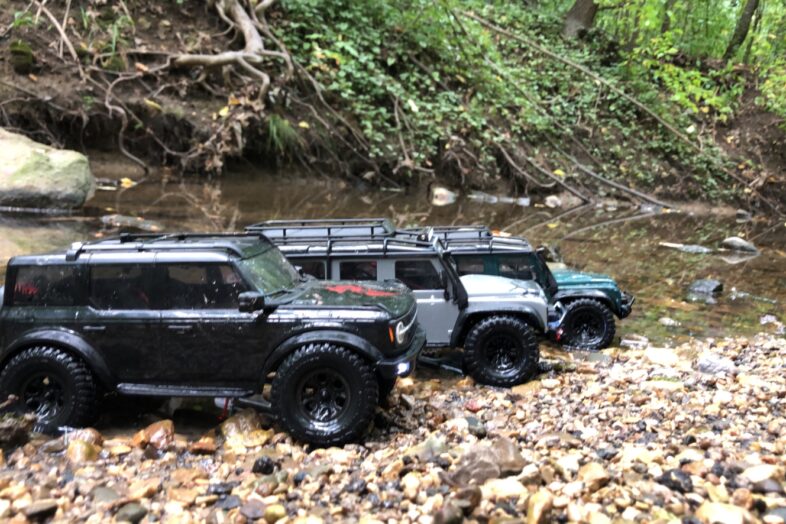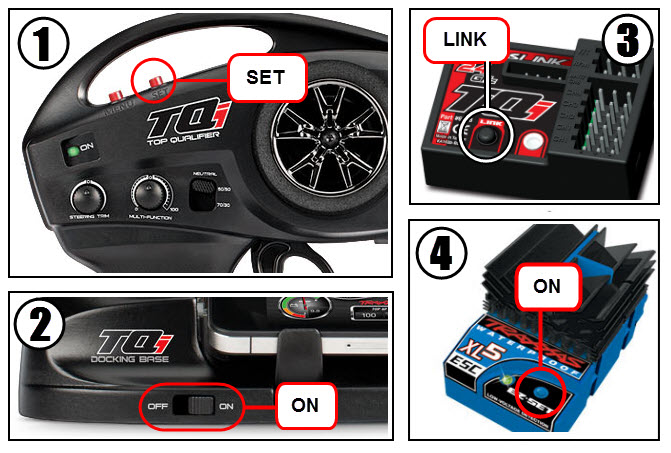
You’ve probably seen the prominent ads on the weekend prime television outlining the superb abilities of the ‘Super Devastator Ultra Road Monster’ or other radio-controlled cars. Similarly, you might have seen people at various parks controlling miniature cars along the parks with remotes and wondered what they were. In this post, I will outline everything about radio-controlled and remote-controlled cars. You will discover these cars’ different components, frequencies, and actions and how they work. Furthermore, you will learn about the differences between remote and radio controls and how they work with models or toys.
Ideally, chances are that if you’re reading this post, you have some interest in operating a remote-controlled and radio-controlled car. Nonetheless, do you know what differentiates them? Luckily, I am here to help you.
Let’s get going!
What Is a Remote-Controlled Car?
Typically, there’s a simple definition for a radio-controlled and remote-controlled car. Remote-controlled cars are operated from a remote location or a distance outside the car. This process is accomplished through several methods, such as a cable linked to the car and the operating device or controllers that transmit radio wave signals to receivers on or in the vehicle.
Nonetheless, since having a cable linked to a car is somewhat limiting, especially regarding where you can drive the car, a more practical method is using remotes to control cars through radio waves.
What’s a Radio-Controlled Car?
Regarding radio-controlled cars, the concept is similar to the aforementioned remote-control devices, with the only difference being that radio-controlled cars are unattached remote-controlled cars.
Understanding The Difference Between Remote and Radio-Controlled Cars
A remote can comprise a radio that communicates with receivers located in the car. Therefore, both terms can apply to a given car. In fact, considering that attached vehicles are rare, it’s typical for cars driven via remote to use radio waves technology.
Since this is all you should understand about the definition and operation of both terms, it’s essential to understand precisely what radio-controlled cars require to operate effectively.
What are the common types of RC Toys?
While RC cars are the most common RC toys, there are several varieties of RC toy models among them:
- Trucks
- Airplanes
- Submarines
- Fantasy vehicles
- Sailboats
- Robots
- Helicopters
- Blimps
- Motor boats
- Animals
How Do Radio/Remote-Controlled Cars Work?
Although the mechanics behind the operation of the various RC toys can vary greatly, the basic operation principle is similar.
The main components necessary for the operation of this car system include a transmitter, receiver, power source, and motor. It is worth noting that the transmitters and receivers are the two primary elements that interact directly.
Once the transmitters receive signals, they need motors to power the cars. Furthermore, a power source is necessary for all the components to work. This power source is typically a transmitter battery and electric, nitro, or gas for the motors and receivers.
What Are the Main Components of Radio or Remote-Controlled Cars?
Every radio-controlled car comprises four primary parts mainly:
Transmitter
A transmitter is simply another way of defining a controller. Transmitters usually utilize 9-volt batteries to send unique radio wave signals to your car, showing them what to do. Many transmitters are relatively small to fit in your hands. I usually hold the transmitter in my hands to control my RC car, sending radio waves to its receiver.
A transmitter usually sends its radio waves into the atmosphere as typical electrical pulse sequences. The work of the receiver is catching these signals and responding accordingly. Primarily, this is performed through antennas designed into the cars to receive these signals and corresponding circuit boards to interpret them while dispatching the instructions along the motors within the car.
One common characteristic of an RC transmitter is that they only utilize two unique frequency ranges, mainly 49MHz and 27MHz, to dispatch signals. I have seen that some RC car makers design controllers that can use both frequencies, allowing two cars of a similar model to operate simultaneously.
Furthermore, many transmitters are usually designed as either full-function or single-function controllers. Single-function controllers generally allow the car to push forward and backward. Alternatively, full-function controllers usually perform the same maneuvers and make your RC car turn left or right while pushing forward or backward.
However, I have seen that an operator is provided with multiple precise control levels in several enhanced full-function controllers. A more advanced RC car controller usually uses dual joysticks with some response levels for precise car control.
Receivers:
Circuit boards and antennas inside the cars receive signals from transmitters and activate the motors within the car as directed by the transmitters.
Motor(s):
Once the transmitters receive signals, they need motors to power the cars. Motors are designed to turn car wheels, operate propellers, or even steer the cars, depending on the model. An RC car motor is effortless. In standard RC cars, for instance, the duties performed by these motors are usually limited to steering the car, turning the wheel, or operating as gas-powered, nitro, and electrical-powered engines.
Power source
The power behind transmitters is usually 9-volt batteries. Inside many RC cars are electric, nitro, or gas motors, antennas, circuit boards, and battery packs. When it comes to power sources, I have identified that the transmitters send control signals to the receivers through radio waves that subsequently drive motors, resulting in specific actions happening. The power sources are rechargeable battery packs, although, at times, they are just standard batteries.
I have seen that in many RC toys, radio-controlled motors offer guidance while other power sources offer locomotion. Below are a few examples:
- Model airplanes are usually equipped with miniature gas-powered engines that turn the propellers while the motors control their flaps.
- Sailboats utilize the wind for effective propulsion, with the motors controlling their rudders.
- Blimps utilize hot air or helium for lift; motors control the small propellers.
Final Word
As you have already realized as you were skimming through this article, it is essential to understand how radio and remote-controlled cars work before making your final purchase decision.
Ideally, if you are searching for a thrilling hobby in which you can have unlimited fun and excitement, then getting a radio or remote-controlled car is the way to go. One of the fantastic things about engaging in this unique hobby is that it accommodates people of all ages. This, therefore, means that, like me, you can do it individually and with your family members and colleagues.
Happy RC car driving!





Add Comment